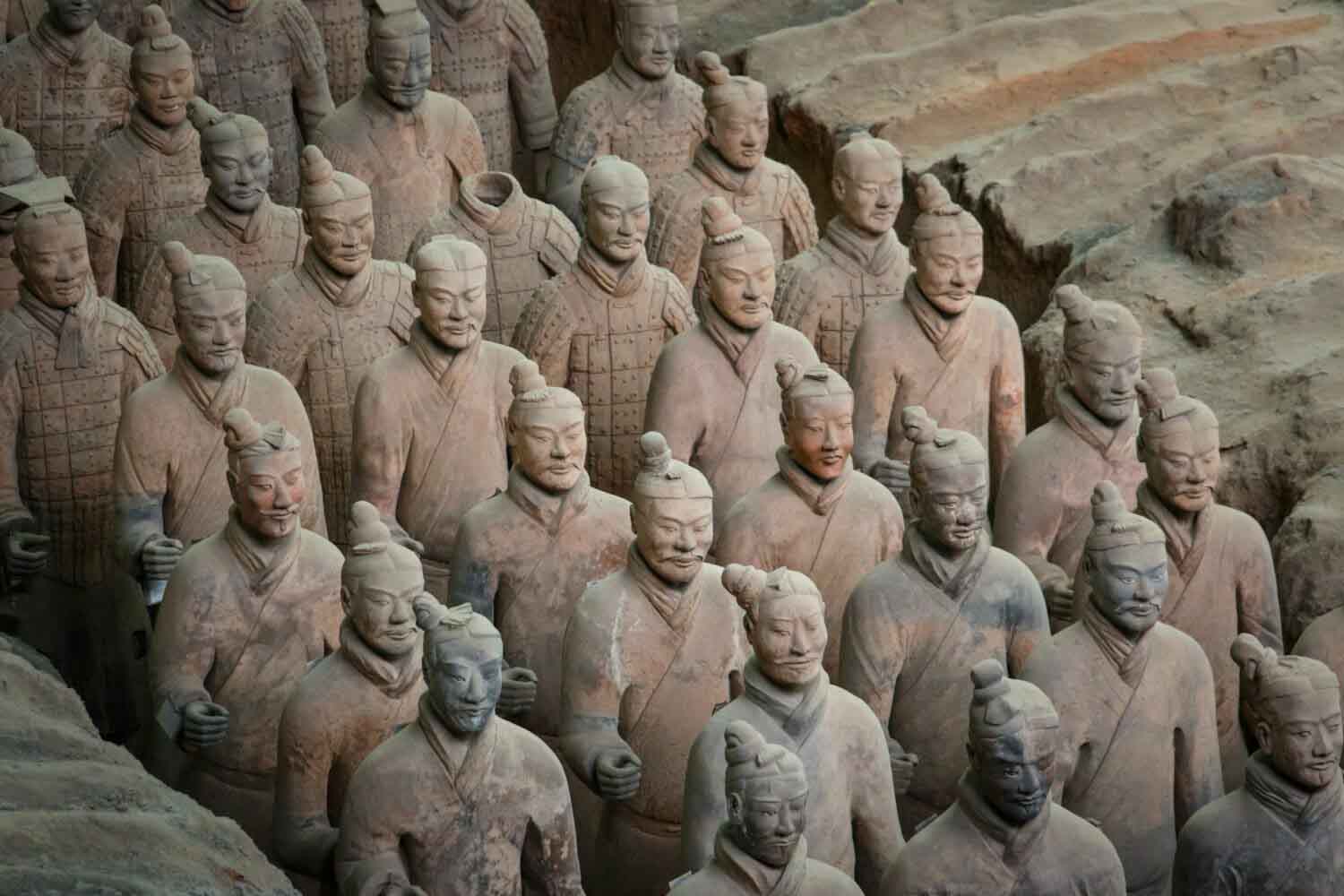A massive wooden coffin buried near the Terracotta Warriors may belong to Prince Gao, son of Qin Shi Huang. The discovery reveals untouched treasures and deepens the mysteries of China’s first emperor.

©Rasmus Gundorff Sæderup/Unsplash
It all began by accident, nearly fifty years ago, when farmers in China’s Shaanxi province were digging a well. Instead of water, they struck something no one expected: a life-size clay figure. That statue turned out to be the first of the Terracotta Warriors, part of an underground army built more than two millennia ago to guard Emperor Qin Shi Huang in the afterlife.
Today, that site is back in the spotlight thanks to an even more puzzling discovery: a wooden coffin weighing about 35,000 pounds (16 metric tons), buried some 52 feet (16 meters) underground and surrounded by treasures untouched by tomb raiders. Archaeologists describe thousands of ancient coins, weapons, armor, jade artifacts, kitchen tools, and even two camels fashioned from gold and silver.
The leading theory? This could be the tomb of Prince Gao, one of the emperor’s sons. A figure halfway between legend and history, mentioned in ancient Chinese texts but never before confirmed by archaeology.
The legend takes shape
Back in 2011, researchers identified nine large burial chambers near the emperor’s mausoleum. One chamber, stretching more than 328 feet (100 meters) and still sealed, seemed unlike the others. When heavy rains threatened to flood it, archaeologists had no choice but to break the silence of centuries.
Jiang Wenxiao, head of the excavation team, recalled:
“The tomb is incredible. Built with an extraordinary precision, deep and vast. We thought it had already been looted, like nearly all ancient graves. And yet, it was intact. No one had ever touched it.”
Inside, every artifact told a story. Jade symbolized purity, weapons were guardians, coins embodied wealth, while exotic animals represented power and might. All clues pointed to a person of the highest rank. But who exactly?
Ancient historian Sima Qian, in his Shiji, recounted how after Qin Shi Huang’s death, his youngest son Hu Hai seized power by eliminating his brothers. Among them, Gao—one of the elder sons—was said to have asked for death so he could rest forever beside his father, faithful to the very end. No one knew whether this was fact or fable. Until now, perhaps.
Confirming the identity won’t be easy
Despite the tantalizing evidence, archaeologists cannot yet declare that the tomb belongs to Prince Gao. The coffin’s wood is severely decayed, and any DNA may have deteriorated after two thousand years. Scientists are weighing several approaches: chemical analysis, comparison of the artifacts with other known objects, and even attempts to rebuild a genetic profile. All of it, however, will require time—and caution.
Even if the body does not turn out to be Gao’s, the discovery remains groundbreaking. It shows how little we still know about the mausoleum of Qin Shi Huang and how sophisticated ancient Chinese tomb construction truly was. More than twenty centuries later, secrets are still being unearthed inch by inch.
For those eager to dive deeper, Netflix has released The Mysteries of the Terracotta Warriors, a documentary tracing each step of the excavation and the theories that continue to fascinate historians and archaeologists worldwide.
Source: Arkeonews
